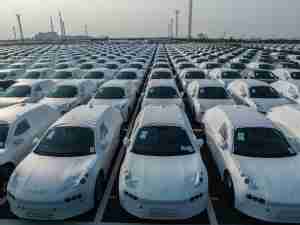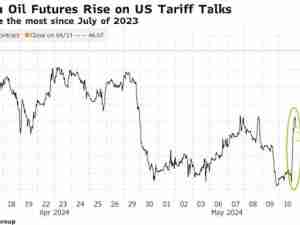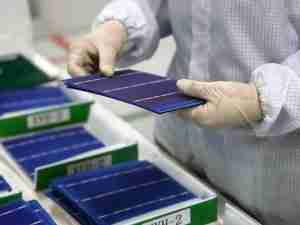U.K. Current-Account Deficit Stays Near Record at 6.9% of GDP
By: Lucy Meakin | Jun 30 2016 at 04:48 AM | International Trade
As Brexit threatens to blast the U.K. economy, few things seem more exposed than the balance of payments.
The current-account deficit—the difference between money coming into the U.K. and money sent out—stood at at higher-than-predicted 32.6 billion pounds ($44 billion) in the first quarter, or 6.9 percent of economic output, the Office for National Statistics said on Thursday. That’s just below a record 7.2 percent seen in the fourth quarter of 2015.
Separately, the ONS said the economy grew 0.4 percent in the first quarter, the same as previously estimated. Consumer spending grew at its fastest pace in almost a year, offsetting declines in business investment and exports.
Last week’s vote to leave the European Union has heightened concerns about the current account, with economists warning that foreign investors may be less willing to finance the shortfall by buying U.K. assets. It’s what Bank of England Governor Mark Carney has described as Britain’s increasing reliance on “the kindness of strangers.”
Almost three quarters of respondents to a Bloomberg survey conducted after the Brexit referendum say the economy will slip into a recession for the first time since 2009.
Off Balance
The total trade deficit widened to 12 billion pounds, while the gap between what British investors earn on their foreign investments and what foreigners earn on their investments in Britain was little changed at 14.9 billion. The secondary-income deficit narrowed to 5.7 billion pounds.
The current-account deficit in 2015 was revised up to 5.4 percent of gross domestic product, the largest since records began in 1948.
Chancellor of the Exchequer George Osborne warned during the referendum campaign that quitting the EU could trigger a balance-of-payments crisis. While uncertainty surrounds future trade terms with the EU—the destination for almost half of British exports—the current-account deficit could narrow as a weaker pound boosts exports and a pickup in euro-region growth delivers more income from investments in its 19 members, economists say.
The pound strengthened 0.3 percent to $1.3461 at 9:36 a.m. London time. It has fallen 8.7 percent since the end of last year.
Consumer Driven
The GDP figures paint a picture of an economy continuing to be driven by domestic demand. Consumer spending rose 0.7 percent, while exports fell 0.4 and business investment declined 0.6 percent.
Services, the biggest part of the economy, grew 0.6 percent and momentum continued into the second quarter with output rising 0.6 percent in April.
Overall growth slowed from 0.7 percent in the fourth quarter of 2015. From a year earlier, the economy expanded 2 percent, unrevised from the previous estimate.
Consumers are being buoyed by rising wages and subdued inflation. Real disposable income rose 2 percent between January and March, the biggest quarterly gain since 2001. The saving ratio was little changed at 5.9 percent.









